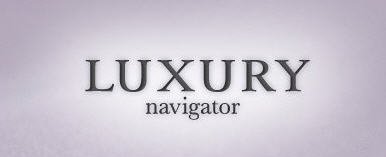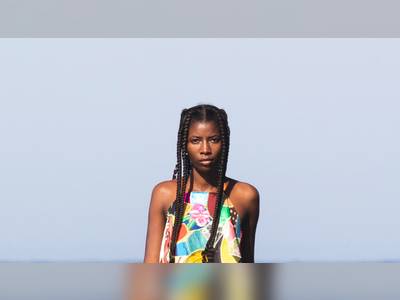Premium and upper-medium priced fashion brands grew by 15% in 2010. At the present moment the total size of the clothing market in Russia has reached 45 billion USD, according to the marketing agency ‘Rosconsultproject’. According to ‘Verdict Research’, Russia is the 6th largest clothing marketing within Europe after the UK, Germany, Spain, Italy and France, with the middle class segment a size of about 16 billion (35% of the total market), and the luxury segment worth about 2 billion USD in clothing, shoes and accessories.
However, Russian brands within Russia actually account for less than 20% of the market, with a major part belonging to foreign manufacturers. Russian is flooded with famous international brands, but at the same time one of Russia’s main features within the fashion market is its premium and upper-medium fashion brands that are usually 30-50% more expensive than in Europe and US (for some US brands the difference can reach 60-70%!).
There are several reasons for such shocking price difference:
Custom duties and taxes.
For a long time Russian government was imposing protective barriers on clothing imports, trying to protect local manufacturers. When merchandise crosses Russia, its cost jumps almost 40%-20% due to custom duties and 18% from Value Added Tax.
High monopolization of Retail.
The number of strong players is limited. There are only few big Retailers, who specialize in the upper middle-class clothing market, which include: Bosco di Ciliegi, with an annual revenue of about $500 million; Crocus International with $400 million; Stockmann Group receiving $340 million; and Holding-Center generating about $300 million (Forbes, 2010). Such monopoly became the result of very high entry barriers, and due to extremely expensive real estate and bureaucratic issues.
Low competition from foreign Retailers.
Only small numbers of foreign Retailers dare to do direct business in Russia. Among them are such giants as Gucci Group, LVMH, Adidas, Inditex (Zara), H&M, Benetton, and GAP. One of the main issues, which can scare off international retailers, is overcomplicated customs legislation, high customs corruption and bureaucracy. Until now most fashion brands prefer to work with Russia through the local Retailers mentioned above.
High rent fee.
In major Russian shopping malls the ratio of rent to revenue is at least twice as high as in Europe. Since most Retailers do not own shopping premises, they are forced to raise prices to compensate for the high rent.
Currently there are no signs that this situation with brick-and-mortar retail in Russia may change for the better in the nearest future.
How long will Russian customers continue to tolerate such huge price difference?
According to the marketing agency ‘Comcon’, it looks like the financial issues has caused a significant change of consumer behavior, with only about 5% of the middle class choosing to shop abroad on regular basis before the crisis. At the peak of crisis in 2009, popularity of shopping abroad grew significantly. For example, according to KPMG and New West End Company, in 2009 the revenue of London fashion retailers from Russian customers went up three times compared to previous year.
Online sales of clothing also continue to grow at a double-digit rate, which became possible due to the explosive expansion of internet penetration in Russia. High speed internet access is also now available for a large part of the population with Russian Internet is growing faster than almost anywhere else in the world ‘according to ComScore’. Currently Russia is the second largest internet market in Europe, after Germany, with more than 42 million internet users and almost 90% of Russian internet users making online purchases.
Many online purchases are made from foreign e-retailers. The Number of these purchases continues to grow, even though sometimes it is very difficult to perform such transactions from inside Russia due to the following reasons:
Many big US and European e-retailers refuse to accept payment by credit cards issued in Russia, this is due to the large amount of internet frauds originated from Russia in the past.
Shipment to Russia is performed by a limited number of vendors. For example, 85% of US internet shops do not ship their goods to Russia.
Issues with Russian customs regulations, which can lead to significant delay or even cancelation of cross-border delivery.
These issues led to a growth of popularity of internet agencies, which specialize in delivery of goods from foreign internet shops (usually their fee is 10-20% of merchandise price).
While the number of purchases from foreign e-shops continues to grow, the majority of local fashion retailers are still unwilling to go online. They argue that customer service online isn't what it's like in a boutique, and shopping over the web could ruin brand perception and decrease an already low offline margin. Until recently, only a few specialized local stores were selling clothing online, but the revenue was low and no serious investment went into this sector to increase the online presence.
The last two years however, brought significant changes into local clothing market; big venture funds started pouring money into online fashion. One of the most successful start-up stories is KupiVip (www.kupivip.ru). This company imitated a business model of the French private shopping club Venter-privee.com. They sell designer brands for members, with reduced prices, including Giorgio Armani, Alexander McQueen, Chloe, Jean Paul Gaultier and many other fashion brands popular in Russia. Kupivip was founded in October 2008 and by the end of 2010 they had more than 1.8 million registered members and a revenue of 80 million USD.
KupiVip and other Russian online fashion players have several advantages over foreign web-stores:
Immediate delivery without any logistic risks.
Possibility to cancel your order at any moment (even after delivery).
If you are not sure about your size, you can order clothing of several different sizes simultaneously, try them on and choose the one which fits you.
You can pay cash on delivery, as many Russian customers prefer to pay cash.
Still, there are several serious problems with Russian online stores. Firstly, prices remain very high and serious discounts are only offered for old stock. Secondly, assortments of local online shops are extremely poor in comparison with major brick-and-mortar boutiques. Thirdly, there are concerns about the authenticity of the goods on sale, as there are many cases of selling counterfeits within Russian online stores.
Due to all these factors customers are more interested in shopping abroad, but most purchases are done offline during vacations or business trips in Europe and US. Ordering clothing from foreign websites is very enticing, but a highly risky process. It may easily happen that in reality clothing does not look exactly the same as on a photo, or it just does not fit. Before buying apparel or footwear people prefer to see it with their own eyes, touch it, try it on and discuss it with their friends. Even when Russian customers take the risk of ordering clothing from foreign online shops, they usually know exactly what they want. It is likely that the online customer has already seen the desired item in a local boutique, with the plan to purchase it later online to save money.
So, the usual formula of actions for price-sensitive consumers searching for fashion brands is the following:
Find something in a local boutique to try on and make sure that you are happy with it.
Go online and try to find the same thing in western online shop.
Order delivery directly from this web-shop or use the service of a specialized internet agency (if direct delivery from the web-shop to Russia is not possible).
As practice shows, most problems happen at Step 2. It is usually very difficult to find the necessary item online. Only a very few fashion brands are well presented on the Web. Most websites, belonging to fashion houses, show only the most general information about a brand and some arbitrary set of photos from the latest fashion shows, usually there are no online shops within these sites. So, fashion brand's websites are often little help for consumers. In order to find necessary items you should go to specialized online stores such as EBay, Amazon, ASOS, Macy's, and Bloomingdale's, etc. There you need to spend some time browsing vast photo catalogues. Since e-tailers only have small section of the collection from a particular brand, there is a chance that you would waste several hours online and end up failing to find what you need or want. For premium and upper-medium fashion brands usually no more than 5-10% of merchandise can be found online available for sale. It creates major obstacles for fashion shopping at foreign online stores.
If the problem with online fashion searches is resolved, Russia could become a very lucrative market for foreign online and offline retailers. Some attempts to resolve this searching dilemma were already taken. One of the most interesting examples is the online service LuxNavi.com. LuxNavi is a web-service, which allows users to search for necessary clothing items using its unique Style Number, also known as Manufacturer Number or Vendor Code. Here is a simple example of how it works:
A customer finds something interesting in a local Russian boutique. Heshe can immediately check which foreign retailer may have this item available for sale. It can be done right in the dressing room with the help of your mobile phone. You connect to www.luxnavi.com, choose the brand name and enter the corresponding Style Number; usually it can be found on tag inside apparel product. The Website provides you with contacts of a foreign retailer who may have this item in stock. If you are interested, you can place an order online and LuxNavi will purchase and deliver your clothing to you from abroad, for a small fee.LuxNavi database is collected using data feeds from Partners. Most of these Partners are offline European Retailers. For them this service is attractive due to zero cost involved, with no need to maintain a website or to make photographic catalogs. Data feeds are provided only twice a year at the beginning of every new season. Retailers provide information on available vendor codes for each brand, some retailers provide prices too, but it is not mandatory.
This service is gaining popularity in Russia. LuxNavi representatives work in all major fashion capitals including Milan, Paris, London and New York, and continue to recruit new retailers, who are interested in the Russian fashion market.
The big price difference between Russian and Western fashion markets presents a huge opportunity for foreign players, both online and offline. The importing of clothing to Russia by private individuals continues to grow extensively.
There is more good news for retailers and consumers: in July 2010 Russian customs regulations were changed and now online purchases from abroad is not eligible for taxation, if its total amount does not exceed 1000 EURO per month for one person (previously this limit was much lower). This change spurred a new surge of online shopping. Last year Russian postal services even experienced serious difficulties with handling such a sharp increase in the number of parcels from Europe and US.
It is expected that in 2011 Russia will join the World Trade Organization. It definitely will affect the fashion market, but most experts don’t predict fast changes, a transition period will take 5-7 years. Customs duties will remain high during this period. As for the other factors, which influence fashion pricing, they will not be directly affected by the WTO. So, price the difference of 30-50% between Russian and the West will continue to exist for a long time and foreign retailers, who will focus their online activity on Russian market, may win significant advantage over local brick-and-mortars.











